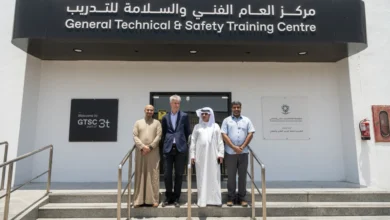
Reimagining Education in the Digital Age: Innovative Models Transforming Learning
Digital technology has changed the way students learn and interact with educational materials. Students worldwide now experience better and more engaging ways to learn as traditional classrooms evolve with technology. Schools and universities must change their approach to prepare students for tomorrow’s digital world.
AI and augmented reality create new ways for individual-specific learning and assessment. Teachers can now deliver custom lessons, give quick feedback, and create engaging experiences with these state-of-the-art tools. AI assessments, virtual reality simulations, and shared digital platforms help solve old educational problems. These tools also help students develop digital skills they need for their future careers.
Personalized Learning: Tailoring Education to Individual Needs
The education system has moved away from traditional one-size-fits-all models to create customized learning paths through technology. Students learn differently based on their unique experiences, cognitive awareness, and cultural background.
AI-powered adaptive learning platforms
Modern adaptive learning platforms employ artificial intelligence to create dynamic learning environments that respond to student performance immediately. These platforms analyze learner behavior and performance patterns and adjust content difficulty, pacing, and presentation methods automatically. The technology processes student data continuously to create refined and tailored learning experiences. Each student receives the most effective educational support through this system.
Evidence-based insights for customized teaching
Educational technology helps teachers make informed decisions using complete student data. Teachers can benefit from evidence-based instruction in these ways:
- Quick spotting of knowledge gaps and learning challenges
- Live adjustments to teaching methods
- Accurate tracking of student progress against learning goals
- Quick support for students who need help
- Better ways to challenge advanced learners
Customized learning paths and pacing
Personalized learning paths help students move through educational content at their best pace. These paths match each student’s learning style, priorities, and goals. Adaptive sequencing analyzes student’s data to adjust content presentation automatically. Students master basic concepts before they advance to complex topics.
Students take more control of their learning experience and still meet standard educational goals through this personalized approach. Teachers can deliver personalized instruction at scale with technology integration. This provides targeted support when students need it and allows advanced learners to move faster through the curriculum.
Immersive Technologies: VR and AR in Education
Immersive technologies reshape educational environments today with experiential learning opportunities that were once impossible. VR and AR technologies turn traditional teaching methods into interactive and engaging experiences that boost student comprehension and retention.
Virtual field trips and simulations
Students can now explore global destinations from their classrooms through virtual field trips that break down physical boundaries in education. These unique experiences let students discover the world in ways previously impossible. They can:
- Walk through iconic landmarks like the Statue of Liberty and Great Wall of China
- Dive into scientific marvels such as the Great Barrier Reef
- Wander through prestigious museums including the Louver and British Museum
- Step back in time with interactive historical reconstructions
3D modeling and visualization in STEM subjects
3D visualization technology has reshaped the scene of STEM education by revolutionizing students’ grasp of complex scientific concepts. Students now use three-dimensional design applications that make abstract concepts tangible and interactive. These powerful tools allow students to manipulate virtual molecular structures, dive deep into human anatomy, and safely conduct experiments in virtual laboratory settings.
Increased textbooks and interactive learning materials
AR technology has revolutionized traditional textbooks by turning them into dynamic learning tools with interactive elements embedded in printed materials. These improved textbooks layer digital information on physical pages that create multi-sensory learning experiences. Students can watch video lectures, explore 3D models, and work with interactive simulations by scanning their textbook pages with devices.
AR in educational materials supports different learning styles and priorities that let students learn at their own pace. The technology makes abstract concepts more relatable through visual representation and hands-on interaction. Students can visualize complex processes, create virtual organisms, and explore planetary systems through immersive simulations in scientific subjects.
AI and Machine Learning: Transforming Assessment and Feedback
AI and machine learning reshape educational assessment by creating better and quicker ways to review student performance and offer targeted support. These advanced technologies turn traditional assessment processes into responsive systems that improve learning outcomes.
Automated grading and instant feedback
Schools and universities now use AI-powered assessment systems to evaluate student work accurately and immediately. These systems evaluate multiple-choice questions, essays, and complex mathematical problems. Students receive instant results and detailed feedback. The system offers several key advantages:
- Teachers spend less time grading
- Students receive consistent evaluations
- Results show performance trends immediately
- Students learn faster through quick feedback
- Students participate more actively with faster response times
Predictive analytics for early intervention
Machine learning algorithms power advanced analytics systems that identify students at risk of academic challenges before obvious warning signs emerge. These systems use multiple data points to predict potential academic difficulties by analyzing attendance patterns, assignment completion rates, and student participation metrics. Schools and universities can proactively implement targeted support strategies based on these insights to help students succeed.
AI-powered tutoring systems
AI tutoring systems are the most important breakthrough in educational technology that offers customized support to many students at once. These systems adapt to each student’s learning patterns and provide tailored instruction based on their progress and understanding. AI tutors analyze student responses live and adjust both difficulty levels and material presentation to keep learning outcomes optimal.
Students show better performance in subjects of all types when these systems are used. AI-powered platforms track and assess continuously to find knowledge gaps and fix them right away. Teachers can now concentrate on advanced instruction and intervention strategies because the system handles basic support tasks.
Collaborative Learning in the Digital Age
Digital learning platforms have developed rapidly and created new opportunities for students to cooperate beyond borders. Educational technology makes uninterrupted interaction possible and turns individual learning into shared learning attempts through knowledge sharing.
Cloud-based collaboration tools
Educational institutions now use cloud-based platforms to create secure and available spaces where students work together. These platforms blend document sharing, immediate editing features, and synchronized storage into one system. Students can work on projects at the same time, share their resources, and stay connected while they focus on learning. The platforms work smoothly with popular productivity tools that boost student participation in group tasks.
Global virtual classrooms and cultural exchange
Virtual classrooms have become centers of cultural exchange that give students a chance to learn from different viewpoints and teaching styles. These digital spaces help create meaningful connections across cultures and offer several benefits:
- Natural conversations that build better language skills
- A wider grasp of worldwide challenges and viewpoints
- Growth in cultural understanding and awareness
- Better ways to connect with people from different cultures
- Rich learning resources from teachers worldwide
Virtual exchange programs let students join international learning experiences without travel restrictions. Students can take part in well-planned online activities that build cultural dialog skills. These programs help them develop soft skills they’ll need in today’s connected world.
Peer-to-peer learning platforms
Modern peer-to-peer learning platforms come with advanced features that make student interactions and knowledge sharing easier. These platforms use video conferencing, discussion boards, and interactive whiteboards to create engaging learning spaces. Students can join group discussions, give feedback to peers, and work together on projects live, whatever their location.
Peer review systems and shared editing tools help students take an active role in learning. The platforms let students form study groups, share resources, and participate in academic discussions. Students develop critical thinking skills through structured peer activities and gain a deeper grasp of course material when they teach and learn from each other.
Technology advances in education have altered the map of traditional learning and created responsive educational environments. Today’s learning platforms combine artificial intelligence, immersive technologies, and adaptive systems to create tailored learning that meets each student’s needs. These tools help educators give targeted support, instant feedback, and compelling content while upholding high educational standards. Students can now experience rich, interactive learning through virtual reality field trips, augmented textbooks, and AI-powered tutoring systems.
Digital state-of-the-art has revolutionized education beyond individual classrooms and created opportunities for worldwide collaboration and cultural exchange. Schools that adopt these technological advances help their students succeed in an increasingly digital world. Quality education has become more available, engaging, and effective for learners worldwide because of these changes. Students learn essential digital literacy skills while they master core subjects, which prepares them for future academic and professional challenges.






[…] journey from early life to becoming the nation’s founding father showed his passion for education, environmental conservation, women’s empowerment, and preserving culture. These […]
[…] force in global development that channels billions of dollars through state-of-the-art digital platforms and giving programs. Technology has revolutionized cross-border donations. These donations are […]
[…] helps connect Black scholars worldwide. Black In Immuno shows this approach by using digital platforms to connect Black immunologists and create an inclusive biomedical community. These platforms […]
[…] Digital platforms for cultural expression […]
[…] vital skill for communication. Organizations that support code-switching help their employees share knowledge and build quick interactions across cultural […]